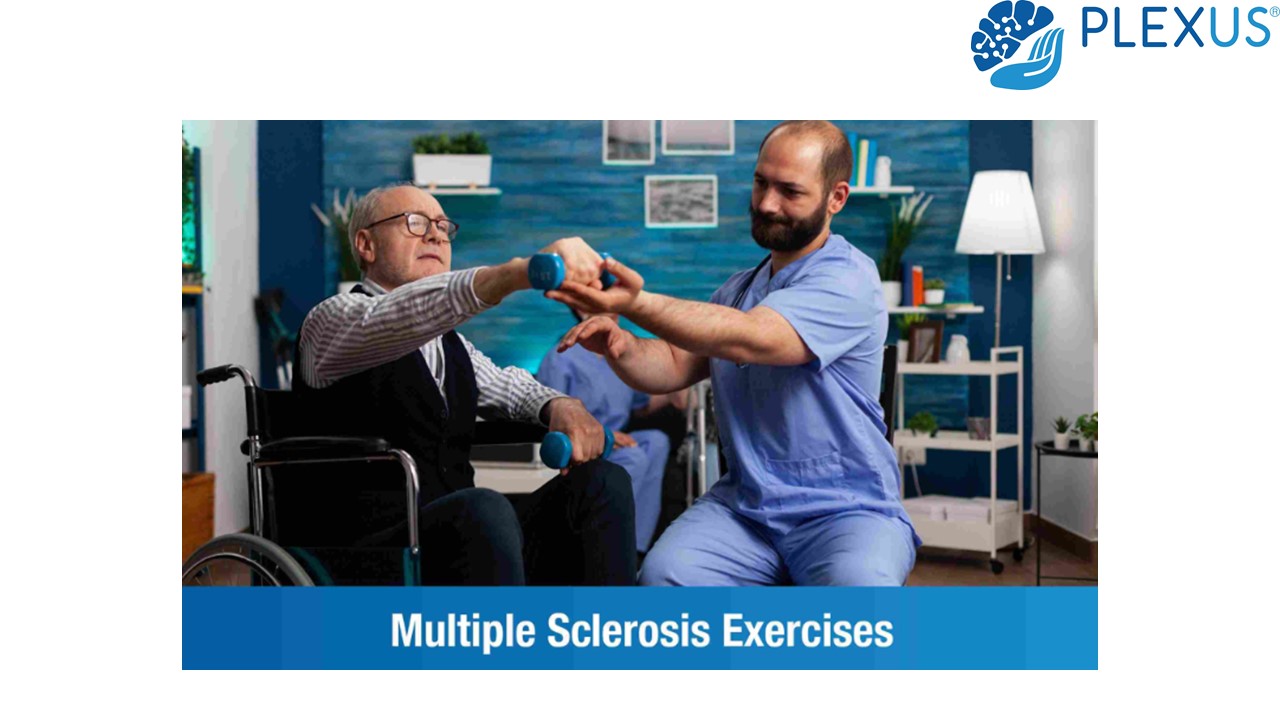Exercises for Multiple Sclerosis (1) - PowerPoint PPT Presentation
Title:
Exercises for Multiple Sclerosis (1)
Description:
Aerobic exercise - Also known as cardio, improves cardiovascular health. Aerobic exercises may include walking, jogging, cycling, or swimming. Strength/resistance training - Resistance and strength training helps increase the overall muscle strength. Balance and core exercises - A strong core helps to maintain a stable body balance, and can be achieved by exercises that focus on controlling the posture and body mass. Stretching/Yoga - Stretching releases muscle tension and helps to decrease spasticity, muscle tightness and stiffness, and lack of muscle control. Yoga has also proven highly beneficial for MS, being a combination of various stretching exercises as well as breathing. Pilates - It helps to improve balance and condition the muscles. Pilates is known to be an effective exercise for treating medical conditions. – PowerPoint PPT presentation
Number of Views:1
Title: Exercises for Multiple Sclerosis (1)
1
(No Transcript)
2
Understanding Multiple Sclerosis
- Multiple sclerosis (MS) is a chronic disease that
adversely affects the brain, spinal cord, and
optic nerves. - It is a chronic neurological disease that
affects the central nervous system. - Just like a virus or bacteria, MS can attack the
healthy tissue, namely, the myelin sheath around
the nerve fibres. This causes inflammation,
resulting in the brain not being able to
communicate properly with the rest of the body
3
Signs and Symptoms of Multiple Sclerosis
- Given that MS affects the brain and the spinal
cord, which in turn, controls all the actions of
our body, some of the earliest symptoms include - Muscle weakness
- Numbness and tingling in the face, body, arms, or
legs - Lhermittes sign (a shock-like sensation when
they move their neck) - Difficulty emptying their bladder or need to
urinate frequently - Bowel problems and constipation
- Fatigue, vertigo or hampering a persons ability
to function at work - Sexual dysfunction
- Spasticity and muscle spasms
- Double or blurred vision, or even partial or
total loss of vision - Emotional changes or mood changes
4
- Some of the less common symptoms include
- Headaches
- Itching
- Respiratory or breathing problems
- Seizures
- Speech disorders
- Swallowing problems
- Urinary tract infections
5
Physical Exercises for Multiple Sclerosis
- Physical therapy and exercise can surely help in
slowing the progression of the disease. It is
essential to follow a complete fitness program
that covers all the required aspects of exercise,
some of which are - Aerobic exercise - Also known as cardio, improves
cardiovascular health. Aerobic exercises may
include walking, jogging, cycling, or swimming. - Strength/resistance training - Resistance and
strength training helps increase the overall
muscle strength. - Balance and core exercises - A strong core helps
to maintain a stable body balance, and can be
achieved by exercises that focus on controlling
the posture and body mass. - Stretching/Yoga - Stretching releases muscle
tension and helps to decrease spasticity, muscle
tightness and stiffness, and lack of muscle
control. Yoga has also proven highly beneficial
for MS, being a combination of various stretching
exercises as well as breathing. - Pilates - It helps to improve balance and
condition the muscles. Pilates is known to be an
effective exercise for treating medical
conditions.
6
Dos and Donts for Efficient Exercising
- Follow a complete fitness program that includes
all areas of exercise. - Consult a physiotherapist before designing a
fitness regime. - Design a fitness plan by keeping the symptoms,
fitness level and overall health in mind. - Set a daily routine that incorporates regular
exercise in moderation for maximum benefit. - Include warm-ups as a standard routine before
starting any form of exercise and make sure to
cool down after exercising. - When starting any new form of exercise, start
slow and progress gradually. - Do not overdo it.
- Prevent the body from overheating.
- Try moderations if the exercises get too
difficult for you. - Do not let fatigue take over take breaks
in-between exercises and get adequate rest. Allow
your body enough recovery time on a daily basis.
7
Thank You































